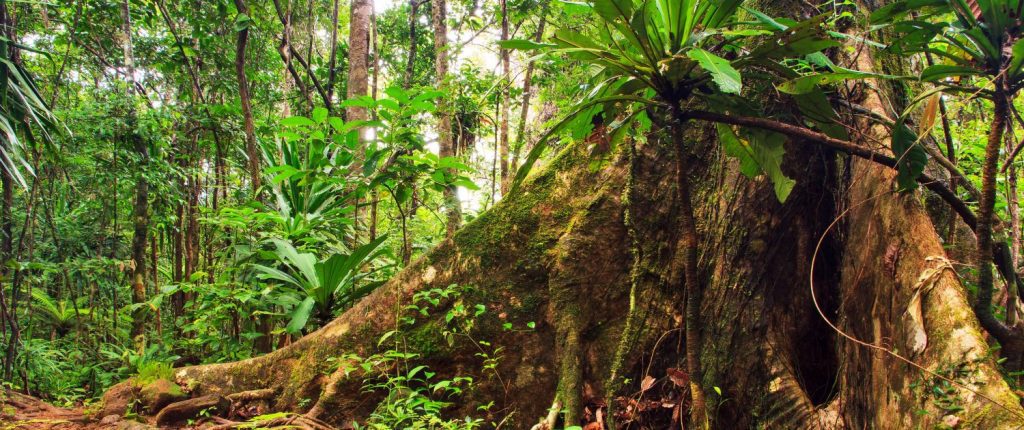The world is a wide web where humans, animals, plants and the environment are deeply connected and depend on one other for survival. To maintain the balance of nature, living and non-living things interact in various ways, wherein if one part of this ecosystem is disturbed, it has a ripple effect on everything else.
A Yoruba proverb “Nkan to ba oju ti ba imu”, translated literally to “Something that touches the eye also touches the nose”, typifies that problems or situations can have wider repercussions than initially perceived. In striving towards achieving the 17 United Nations Sustainable Development Goals, we need to understand how these different elements are linked and why protecting them is crucial for individual health, community health, and our world.
Since ancient times, humans have relied on animals for food, transportation, labour, and companionship. For example, cows and goats provide milk and meat, chickens lay eggs, and fish serve as a primary source of protein for millions of people worldwide. Companion and pet animals such as dogs and cats offer emotional, psychological and socio-economic benefits to humans. Guide dogs help people with disabilities, and therapy animals provide comfort to hospital patients and the elderly.
Studies have shown that interacting with animals decreases levels of cortisol, a stress-related hormone, and lowers blood pressure. It also reduces loneliness, increases feelings of social support, and boosts mood, thereby improving mental health. Pollinators like bees and butterflies help plants reproduce, which in turn, produces food for humans and other animals. Beyond these, wild animals such as lions, wolves, monkeys, and snakes can help to manage pest populations, control herbivore populations, ensuring that plants are not overgrazed, and contribute to biodiversity.

From the story of creation in the Holy books (Gen. 1:11-12; Surat Ar-Rahman 55:10-12), plants are the foundation of life on Earth. Through photosynthesis, plants absorb carbon dioxide from the air and release oxygen for humans and animals. Rainforests are often called the “lungs of the Earth” because of this ability, helping to combat climate change and providing shelter. Plants also serve as a primary food source for humans and animals.
Fruits, vegetables, grains, and nuts provide essential nutrients such as carbohydrates, proteins, fats, vitamins, minerals, fiber, and water, that sustain life. Asides these, plant components (phytochemicals) are sources of medicines. Such include painkillers like aspirin, derived from salicylic acid, a compound found in plants such as the Willow plant (Ewe Àjálá in Yoruba, Osisi in Igbo) and the antimalarial drug, quinine, derived from the bark of the Cinchona/Quina-Quina tree (Kinin in Yoruba).
Plants also protect the environment by preventing soil erosion, purifying water and providing shade that cools the land and serves as shelter for humans and animals. Without plants, the environment would become unstable, leading to more droughts, floods, and loss of biodiversity.
The environment is the sum of all external conditions that affect the life of humans, animals and plants. It includes physical conditions such as water, land and air, as well as the social and cultural conditions that influence life. Water is one of the most critical elements of the environment, as all living things need water to survive. A person can generally survive for around three weeks without food, as the body can utilise stored energy from fat, but only a few days without water. Water covers about 71% of the Earth’s surface, and oceans, rivers, lakes, and groundwater support a wide range of life.
Furthermore, water makes up about 50-75% of the human body, and 60–70% of an animal’s body weight, the exact percentage varying by species. Water makes up one-half to two-thirds of the body mass of an adult and more than 90% of the body mass of newborns. It is very essential for bodily functions such as cell maintenance and temperature regulation. The land is also an essential component of the environment, as healthy soil is needed to grow plants that feed both humans and animals. There is no gainsaying in the fact that, without air, no life would exist.
Humans are considered superior to other creatures due to their advanced cognitive functions, unparalleled intelligence, capacity for empathy, social complexity and cultural traditions. These attributes enable reasoning, problem-solving, complex planning and innovation, causing us to change our world dramatically. Unfortunately, human activities such as water and air pollution, deforestation, poaching, are putting immense pressure on the environment and threatening animal and plant populations.
Water pollution from industries and household waste has contaminated many water sources, making it harder for both humans and animals to find clean drinking water. The air we breathe is also affected by pollution from factories, vehicles, and deforestation. Climate change, driven by the excessive burning of fossil fuels, is causing extreme weather patterns, rising sea levels, and habitat destruction, which threaten countless species.
Soil erosion, caused by deforestation and poor farming practices, reduces the land’s ability to produce food and retain water, leading to desertification and loss of arable land. When forests are cleared for agriculture or urban development, it not only destroys plant life, it increases human-animal interactions, making it easier for diseases to jump between species, and reduces the animals and microorganisms that depend on those plants for survival. When species go extinct or their numbers decline drastically, the balance of nature is disrupted.
We have reached a point in our evolution where our unsustainable lifestyle and the negative impacts of our actions as humans are causing unpleasant backlashes from nature. To protect the environment, we must adopt sustainable practices such as reducing waste and proper waste disposal, using renewable energy responsibly, conserving water, planting trees, and limiting the use of harmful chemicals in agriculture and industry.
Conservation efforts, such as wildlife protection laws and habitat restoration, help to maintain this delicate relationship. The One Health concept, which is a collaborative, multisectoral, and transdisciplinary approach, recognises that the health of humans, animals, plants, and their shared environment are all interconnected. It aims at achieving optimal health outcomes at the local, regional, national and global levels.
One Health emphasises the need for collaboration across different fields such as medicine, veterinary sciences, pharmacy, agriculture, and environmental science, to address global challenges holistically. Recent outbreaks of zoonotic diseases, which are diseases that spread from animals to humans, such as Coronavirus disease (COVID-19), Ebola and avian influenza, highlight the importance of monitoring animal health to prevent outbreaks in humans.
The framework for effective implementation of One Health incorporates political will and commitment, formulation of effective policies, sustainable financing, programme development, knowledge sharing, institutional collaboration, capacity enhancement, engagement and active participation of civil societies and communities.
We must come into balance with nature’s laws and instead of competing and depleting, we should be cooperating and collaborating towards ensuring a healthier future for generations yet unborn. Afterall, “Igi kan o le dágbóse”, meaning a tree does not make a forest. We all need to live together in harmony, for protecting nature sustains us all. It’s Happy Valentine, from me to you!
Prof. Adenubi is a columnist with FarmingFarmersFarms,
bukiadenubi@gmail.com, +2348025409691

